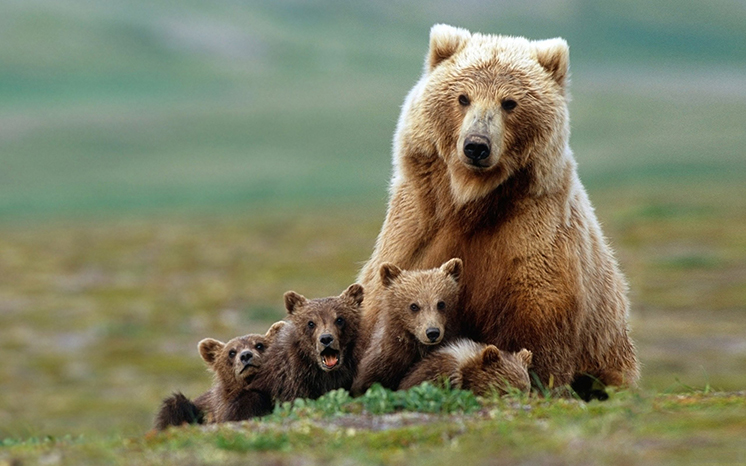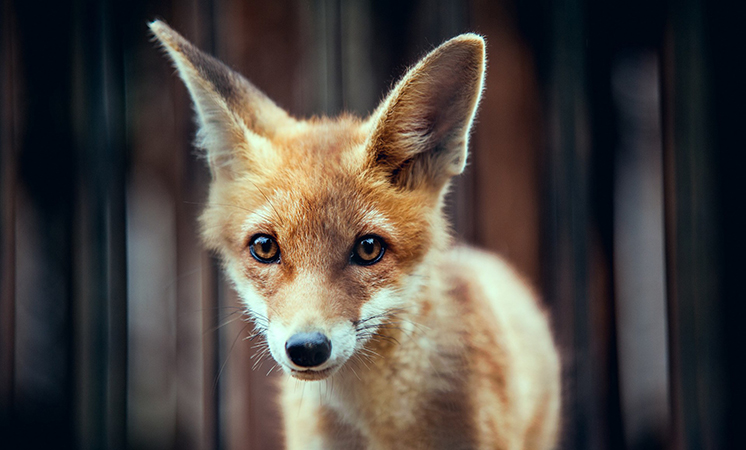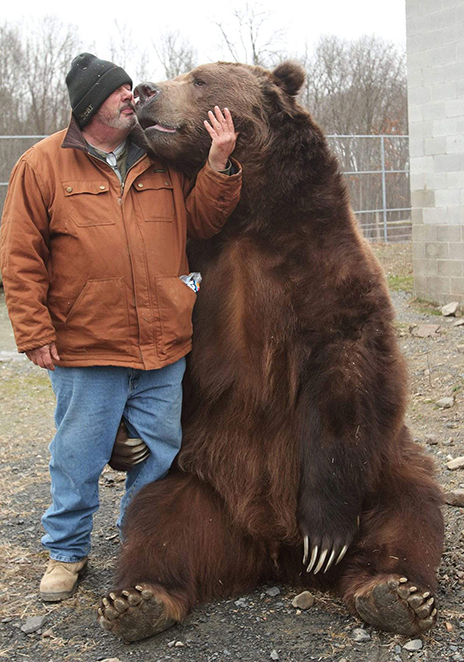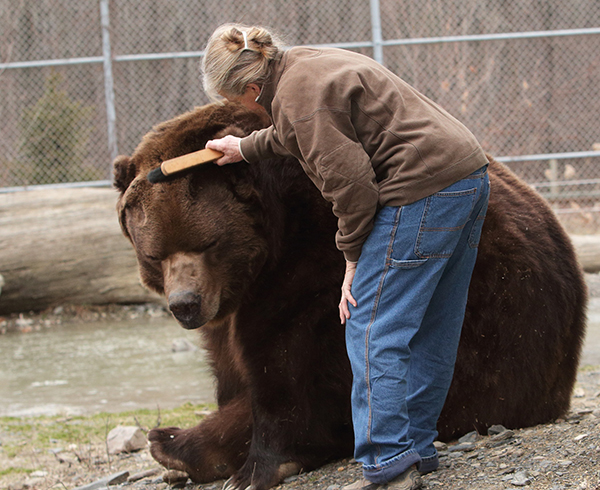Frequently Asked Questions
1. Where are you located?
We are located in Otisville, NY.
2. Can we come visit?
I'm sorry but we are not open to the public.
3. Why aren’t you open to the public?
For a variety of reasons. First, we are not set up like a zoo and so do not have “viewing” areas. Our set up would not be safe for most people to see our animals…and not safe for our animals.
Second, our PRIMARY goal is to rehabilitate and release. We want as limited human contact as we can for most of these animals. The animals here need to retain a fear of humans in order to be safely integrated back into the wild.
Third, this is Susan and Jim’s home. We are not set up like a zoo, or an animal shelter. You would be walking around their gardens and their property. We try to respect that this is where they live.
4. Do you take in ALL wildlife?
No. We do not work with birds, racoons, bats or skunks. Please check the NYS DEC website for a local rehabilitator if you need help with any of those animals.
5. How can I apply for a job with you?
We are a very small organization and Susan does almost all the animal care herself with some local help, so we do not have job opportunities available.
6. Who cares for the animals?
All the animal care is done by Jim and Susan who own the property, and have funded this by themselves for over 30 years. We became a 501(c)3 to be able to assist more animals. The only other "worker" is Kerry who handles the website, Facebook and administrative work.


7. Can I volunteer?
We do occasionally accept volunteers but because of the nature of the what we do here, and the type of animals that reside here, you MUST be a licensed rehabilitator and licensed in NY State.
8. It has always been a dream of mine (or fill in name of person you love here _______) to interact with a bear! Please can you fulfill this lifelong dream and allow us to come and pet the bears?
No. We are very sorry. There is absolutely no way we can allow you to go in with or physically interact with the bears. As with all dreams you need to work for them (smile). If you want to work with bears consider taking the state test and applying for a rehabilitation license and then volunteering at a local rehabilitation organization in your state! We can not allow anyone to go into the enclosures with the bear. Can you imagine any insurance company even covering us for such a thing? I don’t know if that much coverage exists!
9. How big is Jimbo the bear? What kind of bear is he?
We lost Jimbo in April of 2018 to liver cancer. It is still difficult to adjust to life without him. Jimbo was almost 1500 lbs and stood about nine and a half feet tall when he stood on his hind legs. He was a Kodiak bear which is a type of brown bear (like the grizzly). For some more information on our resident bears you can visit our RESIDENTS page.
10. How did these bears come to be with you?
Each of the bears has a different story. So far we have the full story of Frankie the bear up on our website as it's own page and at the bottom of the residents page, you can read the story of the other bears as well.
11. You show pictures and videos of the bears out in the winter. Don’t bears hibernate?
Most bears in captivity do not go into a full "hibernation". Bears don't actually hibernate as far as the true meaning of the word (meaning a full sleep that is not disturbed by any movement or waking to noises etc). Bears often go into a sleep during the winter months called torpor. While in torpor, the animal can wake up quickly and easily. During torpor, their heart rate is extremely low but their body temperature is relatively high, and they won’t eat much or eliminate. They do slow down tremendously, they eat very little and sleep most of the time. But they don't fully hibernate, and will go out and move about a bit most days. After all, there is no scarecity in food source which would trigger a more dormant torper state.
12. What does a bears tongue feel like?
A bears tongue is soft, like a dogs tongue (not scratchy like a cat). His fur is very soft too.
13. Do you have a wish list? How do I donate? Do you accept PayPal?
Thank you so much for your consideration. Our wishlist can be found here.
We would love if you would consider a donation or an ongoing sponsorship! Details can be found on our donate page.
14: What is your biggest need other than the items above?
Our biggest need/desire is one more outdoor bear enclosure. Other than that our biggest need are monthly spomosrs. Our sponsorships range from just $5 up to any amount you like. Regular monthly income that we can COUNT on and know will be there is our BIGGEST need. Please consider donating here.
15. Do bears drool?
No bears do not drool and they have to be EXTREMELY hot to pant.
16. Do bears catch colds?
Bears are very hardy animals and rarely ever get sick.
17. Does bear poop make good fertilizer?
Nope. Good old cow manure is the best for that.
18. Is bear fur soft?
Yes. Very soft. Not quite as soft as a dog...but nothing coarse like a pig.
19. Do bears really like honey?
Yes. Absolutely love it. Especially in comb form. We've just added some to the Amazon wish list of anyone would like to send!
20. Do bears have bad breath?
Nope. They really don't.
21. Do the bears all live together?
No. We have eleven bears and they live in three groups. They live in groups because that is how they came in. So in other words if we get two cubs in at once, they can almost always grow up and live together comfortably and happily. However MIXING bears at adult or pre-adult ages is not really possible. We DID do it with Frankie, but that is actually a pretty rare thing and it was totally due to his amazing personality that it worked. (Read his amazing story if you have not already).
22. Why are Jimbo's claw so long and some of the other bears short. Do you clip them?
Black bears have shorter claws than brown bears. Some of the bears here use their claws more and wear them down more like Leo. We do not clip any claws.
23. If the Syrian bear is endangered, why don't you breed them?
Saving the Syrian brown bear would be a great thing for us to do. They are a beautiful and intelligent type of bear. Unfortunately it takes more than just breeding them to ultimately save them. They need a place to go. The Syrian brown bear is named after the country of Syria -unfortunately they are extinct there. Their range is throughout the Middle East. Reintroducing them would be a big undertaking. It would take someone with a great deal of interest and influence to accomplish that. There are many fine establishments that are dedicated to saving different animals that are endangered. It would be great to keep a population of Syrian brown bear going.

Photo by Dawn J. Benko Photography
24. How do you clean their teeth?
We give them bones to chew on. They have few dental problems. Leo did break a tooth once and he went to the dentist at Cornell.
25. How come we don't see as much of Kimmie, Randy and Rosie?
These three resident bears all live together. They "act" more like wild bears than domestic bears. We do not have as trusting a relationship with those three like we do with the others, as we did not raise them from very young cubs. Hence we have a GOOD relationship and we can interact with them...but not to the extent of the ones we show you. So they live together as a group as they did come in that way, but since they did not come to us as tiny cubs that we could raise...we are careful not to be too familiar with them and we respect their nature. When spring comes we show you video and pics of them too.
26. How long do bears in captivity live?
They can live into their late 30's.
27. How did Jim get involved with bears?
Actually, this was from Susan! Susan grew up working with bears, but Jim grew up on a dairy farm. He was introduced to the bears when he and Susan started going together!
28. When the bears rub their head on Jim, are they marking their territory?
No. In the videos you see where the bears rub against Jim, they are really just using him as a scratching post. Bears DO rub themselves on things though to mark their territory.
29. All the Syrian bears are such different colors - is it a male/female thing, or a range within the species?
Amy and Sonya are true, pure, Syrian bears. Jenny has a little bit of Russian bear in her background. Leo has a little bit of Japanese Hokkaido bear in his background.
Those difference make for the different colorings! All the syrian bears have a white "collar" of fur around their neck, most noticeable in the male syrian bears.
30. Do you have trees growing in their enclosure?
Differfent enclosures offer different things.
One of our enclosures has a pond, the other has trees.
31. Are all the bears spayed and neutered?
All the males ARE neutered, but the females are not spayed (that would be a very major and very risky surgery for them).

Photo by Dawn J. Benko Photography
32. Do bears have a dominance hierarchy?
The eleven bears we have here are separated into three groups, and indeed there is a bear "leader" in each group. Jimbo in his, Jenny in hers, and Randy in his. This is largely because they are the biggest bears in their group, and they are well aware of that. All the other bears are pretty equal. They all have their moments of angst toward each other, but all in all each one knows not to overdo it and cause problems within their family. Jenny and Amy are very close. Sonya likes to keep to herself and Jenny/Amy like to boss her around.
33. Would the bears be fine with ANYONE going in, or just Jim and Susan?
The answer to this is simple. Susan and Jim have been with these bears every day of their lives. They do not allow anyone else to go in with the bears, because the two of them have a very special relationship with the bears that noone else would have. Their relationship is special not only because of the time spent together, but also because of the way they treat the bears.
34. Isn't handling wild animals bad for them? Shouldn't they all be left as wild as they can be, even if they have to stay in captivity?
Any animals that are to be released, we do not routinely handle (except as necessary for bottle feeding, cleaning and geneal care). The goal is to release all the animals, but in cases where they must spend their life in captivity we absolutely do forge a bond and a relationship with them. Most zoos or other wildlife centers can not do so because of the staff turnover. It takes a great deal of time for an animal like a bear to be accepting and trusting of you. But because our center is so small (just Susn and Jim mainly) we feel it is absolutely in the animal's best interest to trust us. In this way if we have to move them from enclosure to enclosure, or if we have to handle them for medical treatment, injuries or examinations, we never have to rabies pole them, terrify them, or chase them with prongs to try to subdue, capture, or tranquilizer them. Bears also do NOT do well with tranquilizers. They often do NOT recover. So we mitigate the risk to them as best we can and having a relationship with them helps them to have a better life in the long run!
35. Do you ever get afraid that they will attack you?
We get this question a great deal and the answer is that ANY animal COULD hurt you. Your dog could bite you, your bird could peck you, your cat could scratch you. But Jim and Susan have built a lifetime of a relationship with these animals. And yes they could get hurt, but the bears recognize the differences in their strength and they are very gentle when intercting with Susan and Jim as compared with when they play with eah other. We won't say it is totally impossible for them to ever get hurt, but the amount of time they spend together and the amount of years expreience they have in reading bears and respecting their space, and their moods, greatly lessens this concern. If at any time one did harm someone, rest assured there would be no ramifications to the animal. We would never put a bear down, but we would likely not continue to interact with that one. We understnad the risks involved and we accept them in order to help these special animals.
36. Why does the pond sometimes appear muddy and brown, or green and murky?
The pond is a natural pond and hence it looks just like a pond you would come across in the woods. Certain times of the year it is very clear, other times it is muddy and brown, other times it is green or murky. This is the life of a natural pond. We don't dump chemicals into it, or treat it in any way because that would NOT be healthy for the bears. There is nothing wrong with discolored water, it is completely normal for it to be that way and better for the animals. It sometimes also creates minerals on the rocks that you will see the bears licking off in videos.



